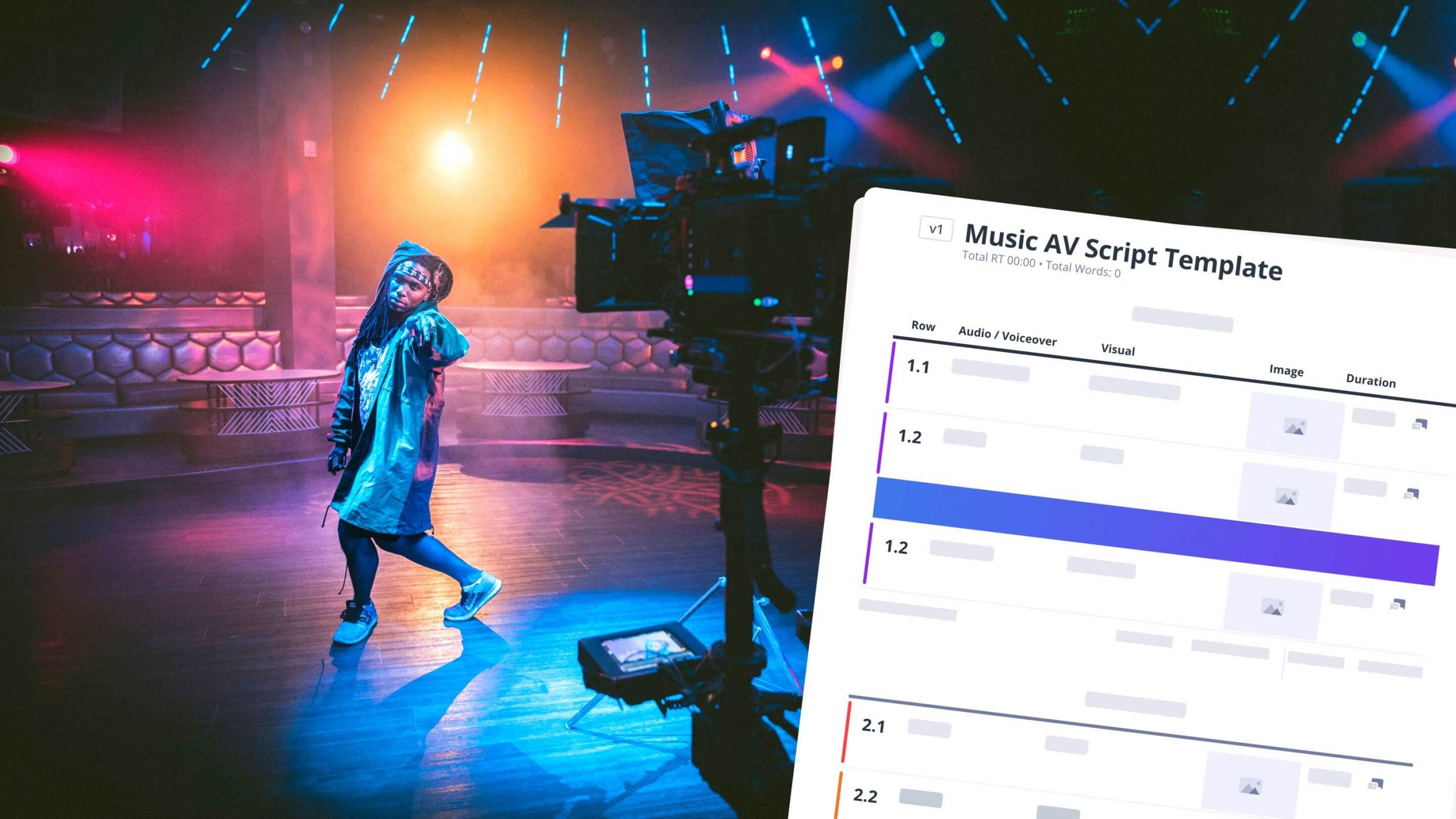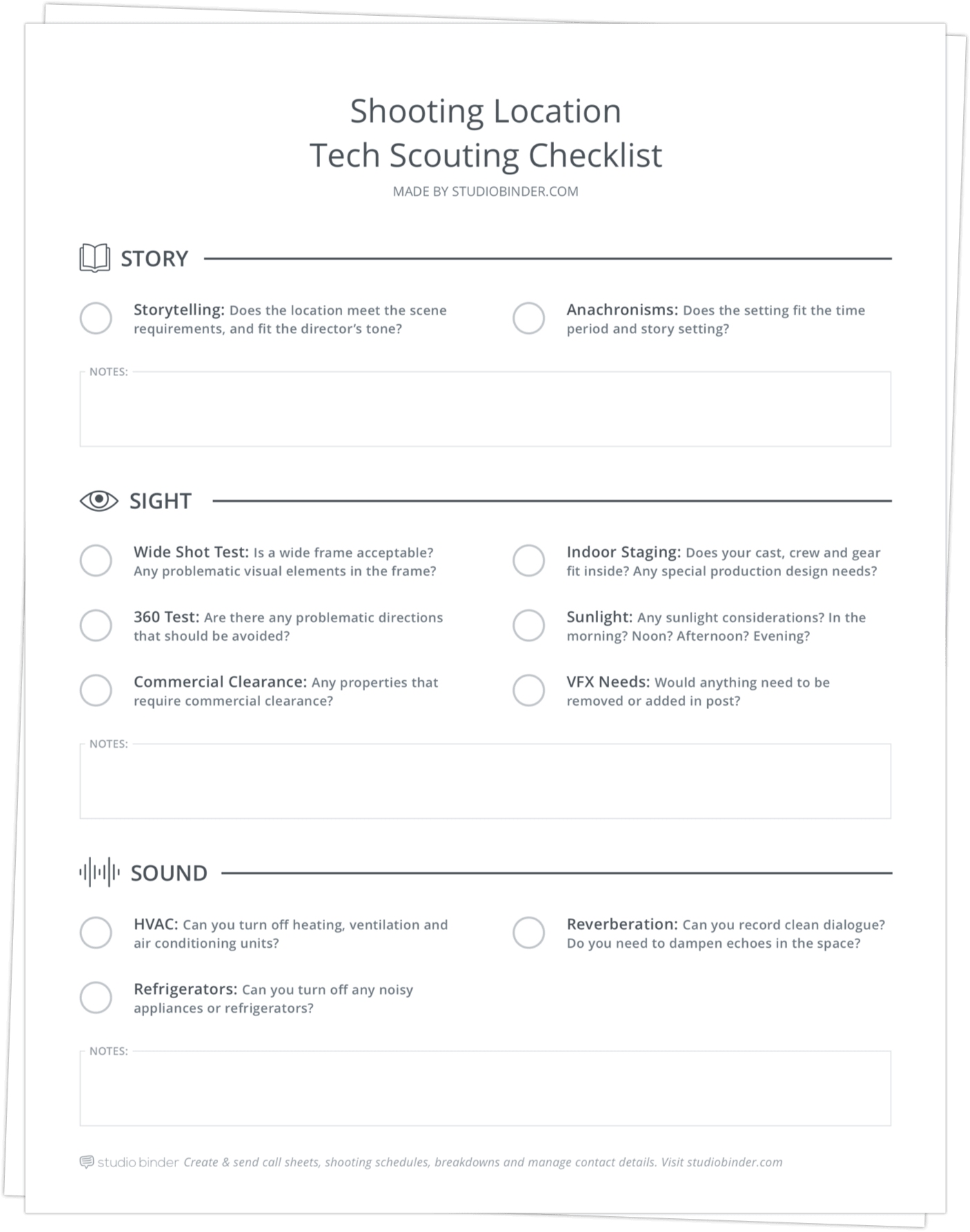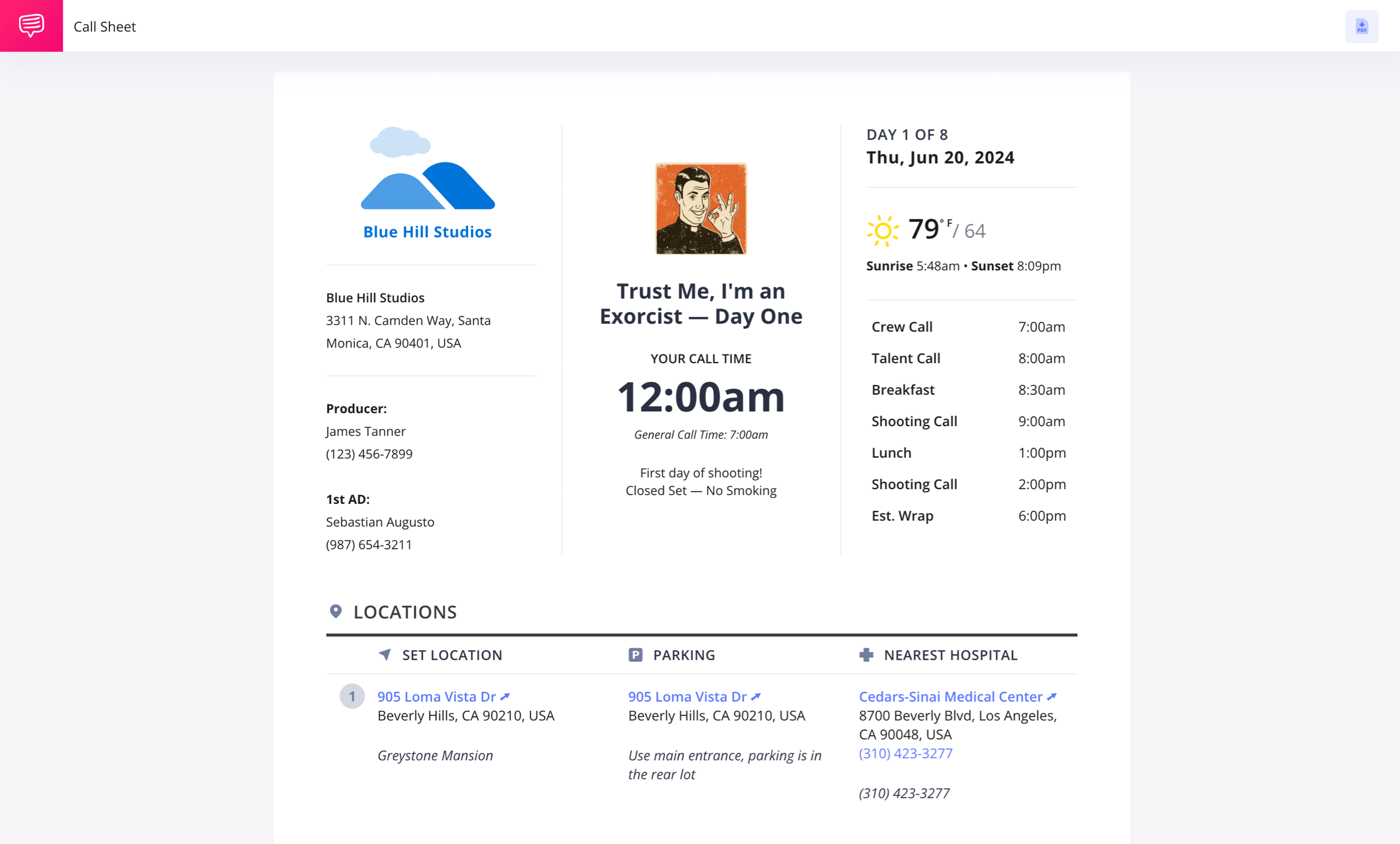In the age of YouTube, songs are meant to be seen, but producing a music video takes different skills and a different approach altogether. You may know a talented artist who needs a music video, and you might already have a pretty great idea for it. Now you want to back that creativity up with a smart production plan. In this post, we’ll break down how to write a music video script and prep for the production with shot lists, storyboards, and call sheets.
How to Write an AV Script in StudioBinder
Music Video Script
1. Write a music video script
As you listen to the song you’re going to cover, your mind starts to fantasize. You’re gonna use slow-mo there, a close-up of a syringe there, a wide shot of a goth drummer there — it’s going to be a weird country music video.
But you're still unsure of how to write a music video script.
Unlike a traditional screenplay with very particular screenplay formatting, your music video script should list your visuals on one half of the page, with audio and lyrics on the other.
This is called an AV script, or a two-column script, and they look something like this:
Music Video Script Example • Made in StudioBinder
If you haven’t already, you need to fill out your music video script before entering the next step. But how to make such a text?
Lucky for you, StudioBinder has an AV script writing software.
Let’s go through the steps of how to write a music video script, regardless of the software you choose.
1. Establish your structure
Your music video script may not have a three act structure, per se, but it will likely have some sort of structure. Your script should reflect that structure.
This outline may be based on the song — one section for the first verse, one for the chorus, etc. Or it may be more of a narrative video based on the story being told throughout the song.
2. Write the Audio
The left-hand side of your AV script is for all things sound. In a music video script, this will largely be, well, music. So you can write out lyrics, musical cues, etc. If you have dialogue, that goes here as well.
3. Plan your shots
Now to the right-hand side: the visuals. This is where you’ll describe the imagery of your video, and delineate what should be shown when. This allows you to pair camera shots and camera angles with moments of the song.
4. Time your script
With music videos, timing is everything. You want to make sure your concept is fitting within the timing of the song. With a music video script, you can mark how much time each section should take.
5. Get feedback
Making a music video typically means working with clients — the band, their manager, publicist, and so on. Before you start filming, you’ll want to make sure everyone likes the idea. This means both your clients and your collaborators, like your director of photography and assistant director.
These steps can feel complicated, but using StudioBinder’s AV script software, they’re intuitive and simple.
MUSIC VIDEO SHOT LIST
2. Make a storyboard and shot list
With your musical artists taking care of the audio, your job as Director primarily extends to the visual.
While a well-written music video script can easily be turned into a shot list. Watch how Brent from ShareGrid shot listed his music video.
Learn how to shot list a music video • Create a free shot list here
Once you have a shot list, you can turn it into a storyboard, where you can draw out what each shot will look like as described on your list. If you want, you can then put the resulting images in your AV script for maximum clarity about what is shown when. Read more on how to make a music video storyboard.
RELATED POSTS
MUSIC VIDEO LOCATION SCOUTING
3. Find your shooting location
With musical artists’ schedules constantly in flux, most music videos are shot over the course of two jam-packed days. Because of this constraint, it’s not a bad idea to choose one location for your music video.
Shooting at one location will make it easier to coordinate your talent and crew (more on that later) to the set. This also saves your designers time because they only have to light and dress your location for one day of shooting.
Scope out locations that suit your music video script and get a running list going. Use a location scout checklist like the one below.
Free location scouting checklist
Also, make sure to download this shooting location release form.
Don’t be daunted when reaching out to unlikely locations, you’d be surprised how often people will say yes for free publicity.
Pro Tip: HOW MUCH DOES IT COST TO MAKE A MUSIC VIDEO?
If you’re an indie filmmaker, it can cost anywhere from 5,000 to 500,000 dollars. If you’re making a video for your own band, chances are you can save money by having your friends hold the camera and flick on the fog machine. With low budgets comes room for innovation as well as an increased risk of bumps in your production process.
Crew Up
4. Hire your film crew
A music video script is nothing without a film crew, ready to hit the ground running. If you’re operating on a low budget, hit up your friends to round out your production.
If you have a budget, check out ProductionBeast to gather your crew together. You can also post an ad on Facebook.
By posting in these groups, you can land yourself a film crew in your area. Make sure you have plenty of pizzas on the craft services table.
Pro Tip:
MAKE SURE YOUR CREW BRING THEIR EQUIPMENT
If you’re working on a slightly smaller budget, you’ll want to make sure your crew brings their own equipment to set.
If you’re procuring the equipment yourself, check out BorrowLenses or ShareGrid where you can easily rent camera and film equipment. Don’t forget to rent extra batteries, memory sticks, and film (if you’re going down that road).
Related Posts
Production Insurance Policy
5. Have production insurance policy
In order to protect yourself against liabilities, be sure to purchase short term production insurance the fully covers your music video shoot. It’s unlikely you’ll need an annual policy unless you’re a production company.
MUSIC VIDEO SHOOTING SCHEDULE
6. Finalize the shooting schedule
Once you’ve assembled your team of talent and crew, it’s time to figure out when you’re actually going to shoot the damn thing.
From your music video script, you’ll have a clear idea how extensive and complicated your shooting schedule will be. If your shoot is only one day, but encompasses many locations, be sure to account for company moves.
Pro Tip: Schedules & Call Sheets
Before you can make your call sheet (more on that in a second), use a shooting schedule template to plot out the order of scenes you'll be shooting. That way everyone on set understands the schedule, and you'll know how to best schedule each cast and crew member's call time. For one-day productions, this step is a breeze.
Related Posts
Create & Send Call Sheets
7. Send out your call sheets
It’s hard to keep track of everything on day one of shooting a music video. Crew has to get there before the musicians show up, sound engineers have to set all the equipment with the talent, the list goes on.
In order to organize the madness, producers send out call sheets to alert everyone when to come to set, and where they're supposed to park, etc.
StudioBinder can generate call sheets directly from your shooting schedule. Call sheets are mobile-formatted and personalized to avoid any confusion. Here’s what a final call sheet using a StudioBinder template will look like:
Music Video Call Sheet Example
It'll even send out SMS reminders — perfect for crew and artists on-the-road.
Bottomline: a well-made call sheet ensures that production will start on time. Any working professional will say that a good call sheet is a key giveaway of the professionalism a shoot.
Pro Tip: BRING AN AMP TO SET
You can’t shoot a music video without music. Make sure you not only have a copy of the song on set, but also loud speakers so the artists can lip sync.
Related Posts
UP NEXT
Time to write your music video!
Gearing up to begin work on your own music video? Look no further than StudioBinder’s AV script software to get started. You can etch out your ideas and share them with collaborators in an extremely easy to understand and legible format.



